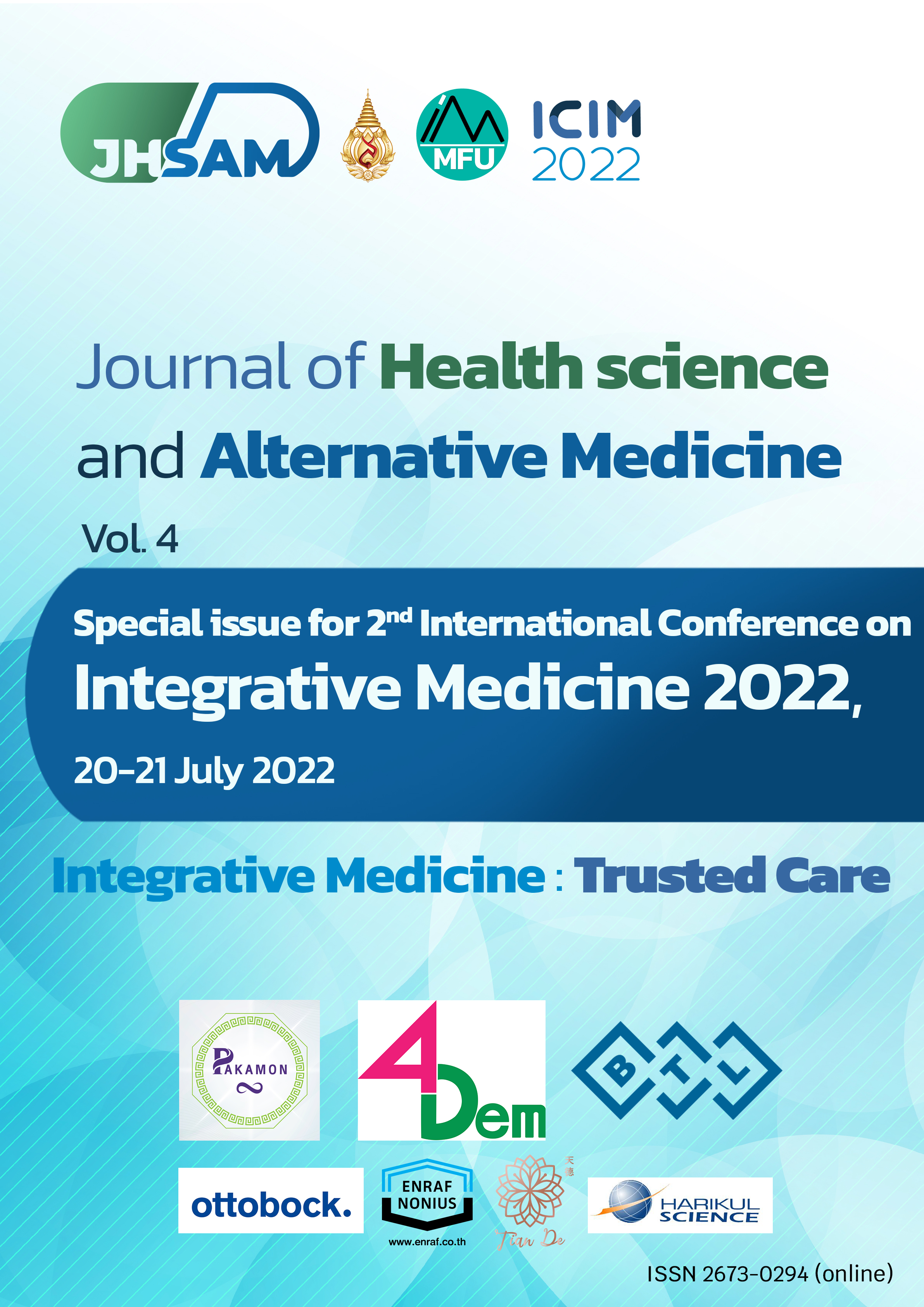A17. Proliferation and Survival Enhancing Effect of Pinocembrin on Immortal Human Epidermal Cells
Main Article Content
Abstract
Introduction: Pinocembrin is one of the active compounds that is found in many plants, mostly in the Zingiberaceae family. Previous studies reported that pinocembrin possesses wound healing enhancing activities. However, the wound healing-promoting activities of pinocembrin in human cell lines have not been fully elucidated; especially for the aspect associated with the growth and survival signaling pathways.
Objective: To investigate possible molecular mechanisms of pinocembrin in enhancing growth and survival signaling pathways in human keratinocytes
Methods: Immortal human keratinocyte cell line (HaCaT) was used as an in vitro model. Western Blot analysis and immunofluorescence techniques were used to investigate the molecular mechanisms of pinocembrin. Specific inhibitors of proliferation and survival signaling cascades, which were U0126 and LY294002, were also used for confirming the mechanism of pinocembrin.
Results: Pinocembrin activated ERK1/2 and Akt phosphorylation which play important roles in growth and survival signaling pathways, respectively. The effects were seen in dose-dependent fashion. Moreover, MEK inhibitor (U0126) and PI3K inhibitor (LY294002) confirmed that pinocembrin induces proliferation and survival through stimulating the MAPK and PI3K/Akt signaling pathways.
Conclusion: Pinocembrin induces the proliferation and survival of human keratinocyte cells. Its mode of action is mediated through the activation of ERK1/2 and Akt which typically function in maintaining cellular proliferation and survival. In summary, the current study supports the wound healing-enhancing effect of pinocembrin at the molecular level and further supports its potential therapeutic applications for skin regeneration.
Article Details

This work is licensed under a Creative Commons Attribution-NonCommercial-NoDerivatives 4.0 International License.
JHSAM publishes all articles in full open access, meaning unlimited use and reuse of articles with appropriate credit to the authors.
All our articles are published under a Creative Commons "CC-BY-NC-ND 4.0". License which permits use, distribution and reproduction in any medium,
provided that the original work is properly cited and is used for noncommercial purposes.
References
-

